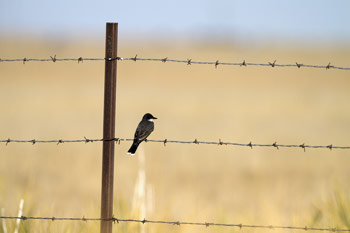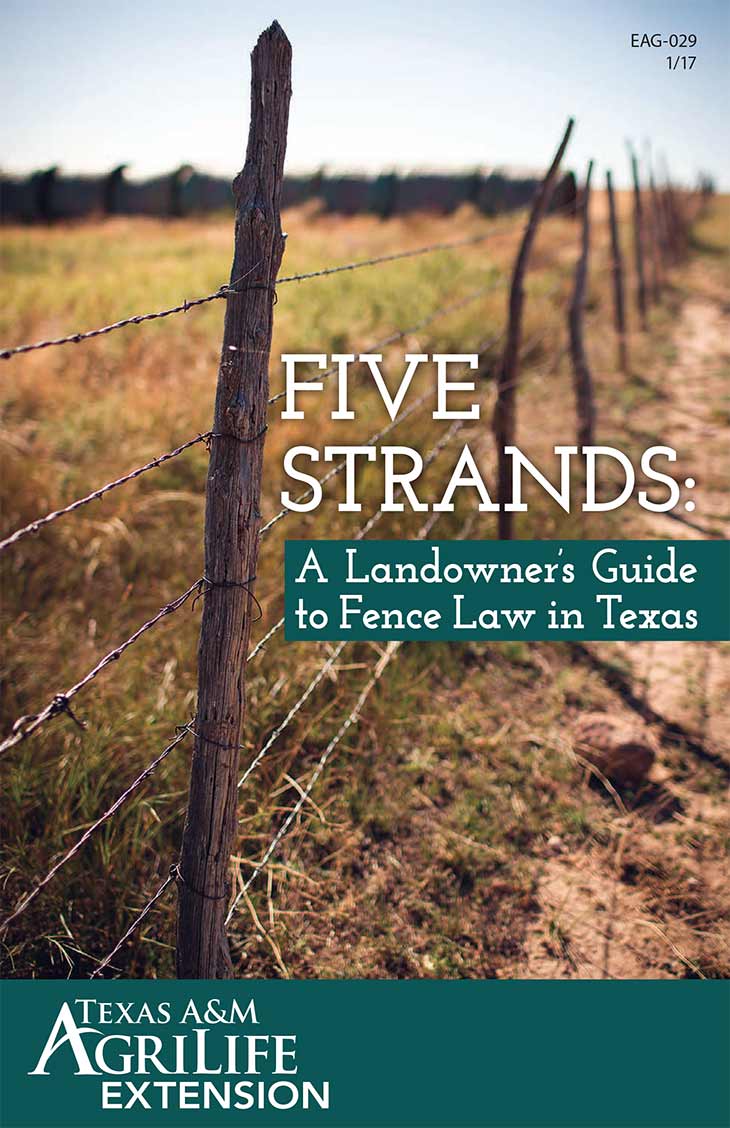As the saying goes, “good fences make good neighbors.” Unfortunately, as many rural landowners know, however, fence issues also can create extremely strained relationships among neighbors.

If a cow gets onto a roadway and is hit by a motorist, can the livestock owner be liable? What should you do if there are stray livestock on your property? If a boundary fence falls into disrepair, who is responsible for footing the bill to do the needed repairs? What can you do about frustrating tree limbs from the neighbor’s tree that are hanging over your property? These are just a few of the issues that commonly plague landowners, and their lawyers, when it comes to fence law.
Initially, it is important to note that the very best solution to any fence law issue is to sit down with your neighbor over a cup of coffee. Oftentimes, it is not legal action that is needed, but simple communication. It will often save time, money and frustration if two neighbors can come to an agreement themselves when fence issues are at hand.
As with any agreement, it is prudent to put the agreement in writing and have it signed by both parties involved. This will help ensure that everyone is on the same page regarding their responsibilities, and it will offer solid evidence of the details of the agreement in the event that a dispute arises.
Closed Range Versus Open Range
A livestock-versus-motorist collision on a roadway can be an important landowner issue. Although laws vary greatly by state, when livestock are hit on a roadway, the starting point when analyzing potential livestock-owner liability is to determine whether the accident occurred in an area that is “open range,” also called “fence out,” or “closed range,” also called “fence in.”
In a closed range area, a landowner has a legal obligation to prevent his or her animals from roaming at large. If the landowner fails to act reasonably under the circumstances, and the animals escape and are hit on the road, the livestock owner can be held liable. Mississippi is an example of a state that has statutorily adopted the closed range model.
Mississippi law provides that livestock owners “shall not permit such livestock to run at large upon the open or unfenced lands of another person … but shall keep such livestock confined in a safe enclosure or upon lands belonging to such person.” However, individual counties in Mississippi may choose to hold an election and vote not to be covered by the statewide stock law quoted above.
Historically, many Western states, including Texas and New Mexico, were considered open range, meaning that in those states, a landowner has no legal obligation to prevent his or her animals from running at large. Thus, if a motorist hits a cow in an open range area, the cattle owner cannot be held negligent for his cattle being on the roadway, because he had no legal duty to prevent them from being there.
Exceptions to Open Range Doctrine
Given the passage of time and the urbanization of the western United States, there have been exceptions to the open range doctrine in certain states. In Texas, for example, any federal or state highway is considered closed range. This means that if a cow is hit by a motorist on Interstate 40 in Texas, the landowner could potentially be liable if he or she is found to have permitted the animal to run at large. However, if the same collision occurred on a farm-to-market road in Texas, this rule regarding federal or state highways would not apply, and those areas could still be open range if there was no local stock law modifying that approach by the county.
Similarly, under Louisiana law, there are certain highways of the state that are deemed to be closed range by statute, and livestock owners may not “knowingly, willfully or negligently” permit livestock to run at large in those areas.
So how should livestock owners protect themselves? First, they should investigate the status of the law to determine if they are in an open range or closed range area. As was noted above based on laws in Mississippi and Texas, this may not be an easy question to answer given the various exceptions and potential for passage of local laws. Second, regardless of the applicable law, livestock owners should consider obtaining a liability insurance policy that covers claims by motorists for collisions with livestock. Third, landowners — particularly those in closed range areas — should carefully inspect fences to ensure they are adequate to keep livestock in, so as to prevent a collision from happening at all.
Stray Livestock
Another common fence-related issue involves livestock owned by one person on the property of another. For example, if a rancher discovers 50 head of his neighbor’s cattle on his property, what should he do from a legal standpoint? Certainly, if the landowner knows the owner of the cattle, he or she should consider contacting that person and letting them remedy the issue.
If, however, the owner is unknown or does not take action, many states have statutes that address this issue. Alabama, New Mexico and Texas, for example, have “estray” statutes that deal with the procedure landowners should follow when there are stray livestock on their property. The details differ by state, but importantly, the adage of “finders keepers” does not apply in the context of stray livestock.

For more information, check out “Five Strands: A Landowner’s Guide to Fence Law in Texas,” published in February 2017 by the Texas A&M AgriLife Extension Service. Download the handbook at http://bit.ly/2qBuAlv.
Fence Repair
A frequent question is whether landowners can require neighbors to share in the cost of repairing or building a boundary fence. Again, the specific rules vary by state. In Texas, one landowner may not force his or her neighbor to help pay to repair a boundary fence. The opposite is true in Kansas, for example, where generally owners of adjoining lands are required to build and maintain fences in good repair in equal shares, unless they have an agreement to the contrary.
In Louisiana, a landowner may compel his neighbor to contribute to the expenses of making and repairing common fences if the lands are enclosed. Additionally, a variety of other rules, such as local zoning laws or homeowners association covenants, may come into play when landowners look to build fences. Landowners should take time to investigate the rules in their jurisdiction.
Overhanging Tree Limbs
The issue of tree limbs overhanging one’s property arises often, particularly in areas where neighbors live close together. Most states take the approach that the tree is owned by the landowner on whose property the trunk is located. In many states, including Texas and Alabama, landowners have the right to take action to remove tree limbs or tree roots that encroach on their property. This allows the neighbor to trim the tree back to the property line, but does not allow trimming of the tree on the adjoining property.
In summary, fence law issues are both common and more complex than meets the eye. It is important for landowners to investigate and understand the applicable law in their jurisdiction as it relates to fences. And remember, a morning at the coffee shop is always a better option than a morning at the courthouse.
– Tiffany Dowell Lashmet, Texas A&M AgriLife Extension Service agricultural law specialist
Note: This article is not a substitute for legal advice of an experienced attorney licensed in your jurisdiction.